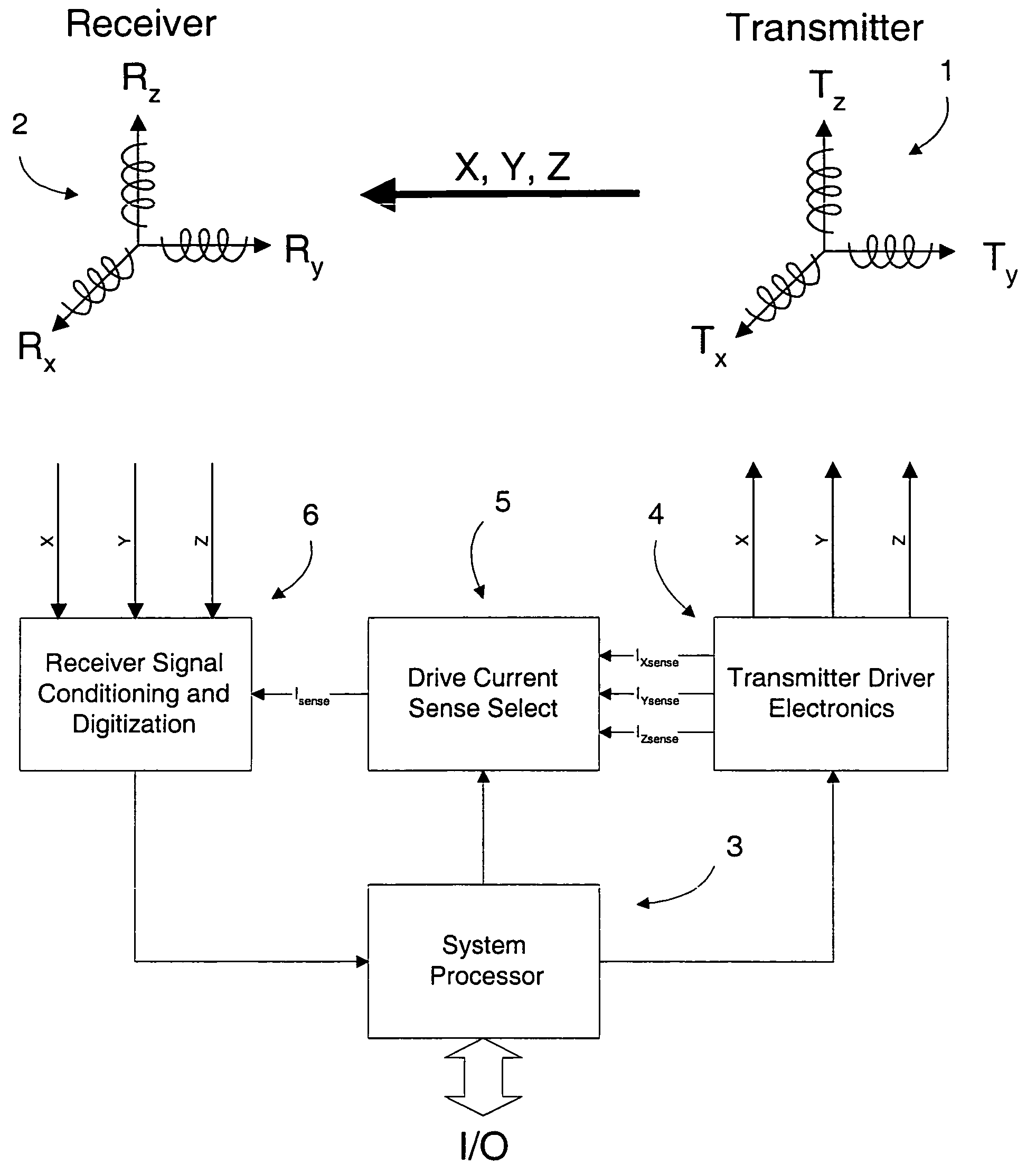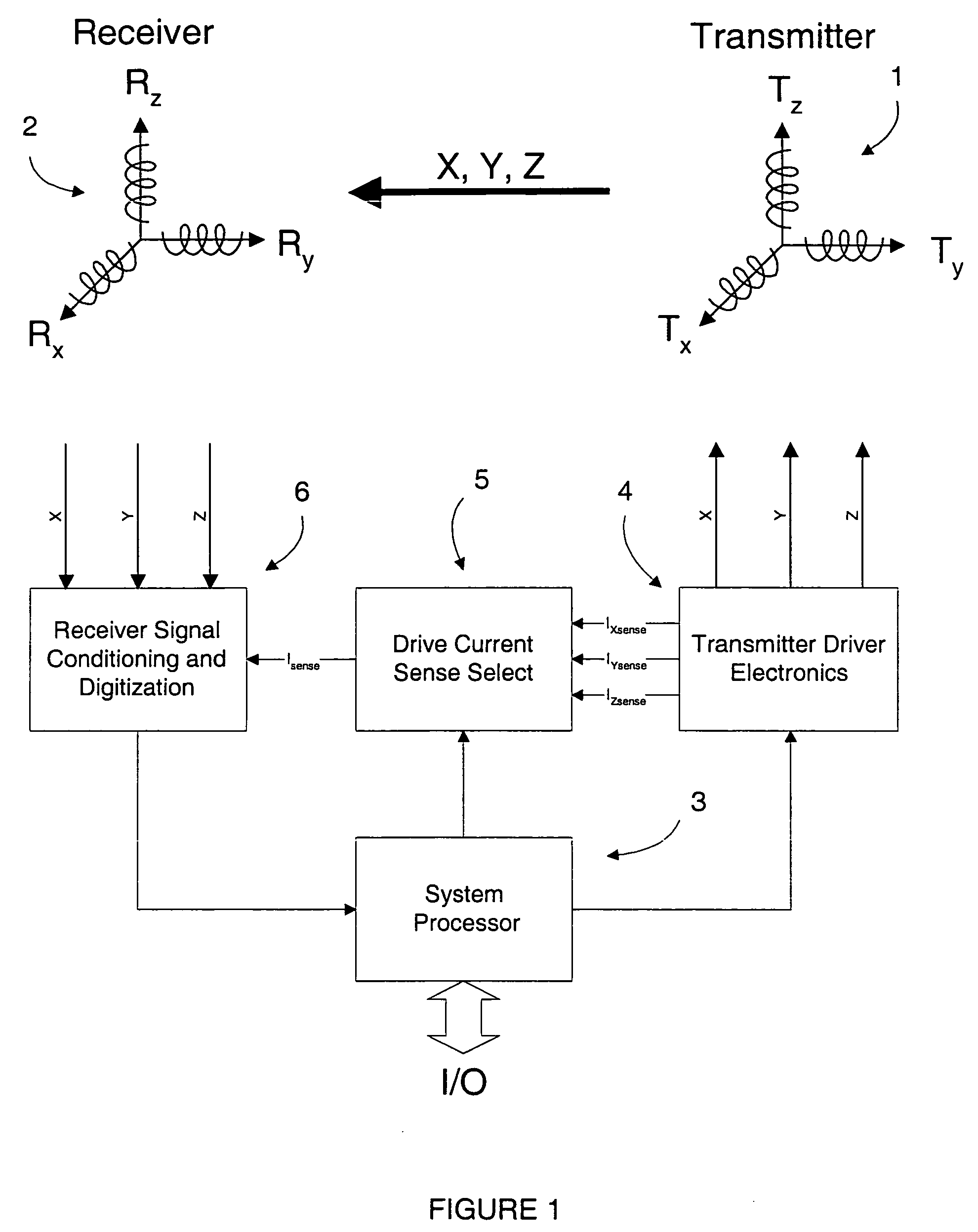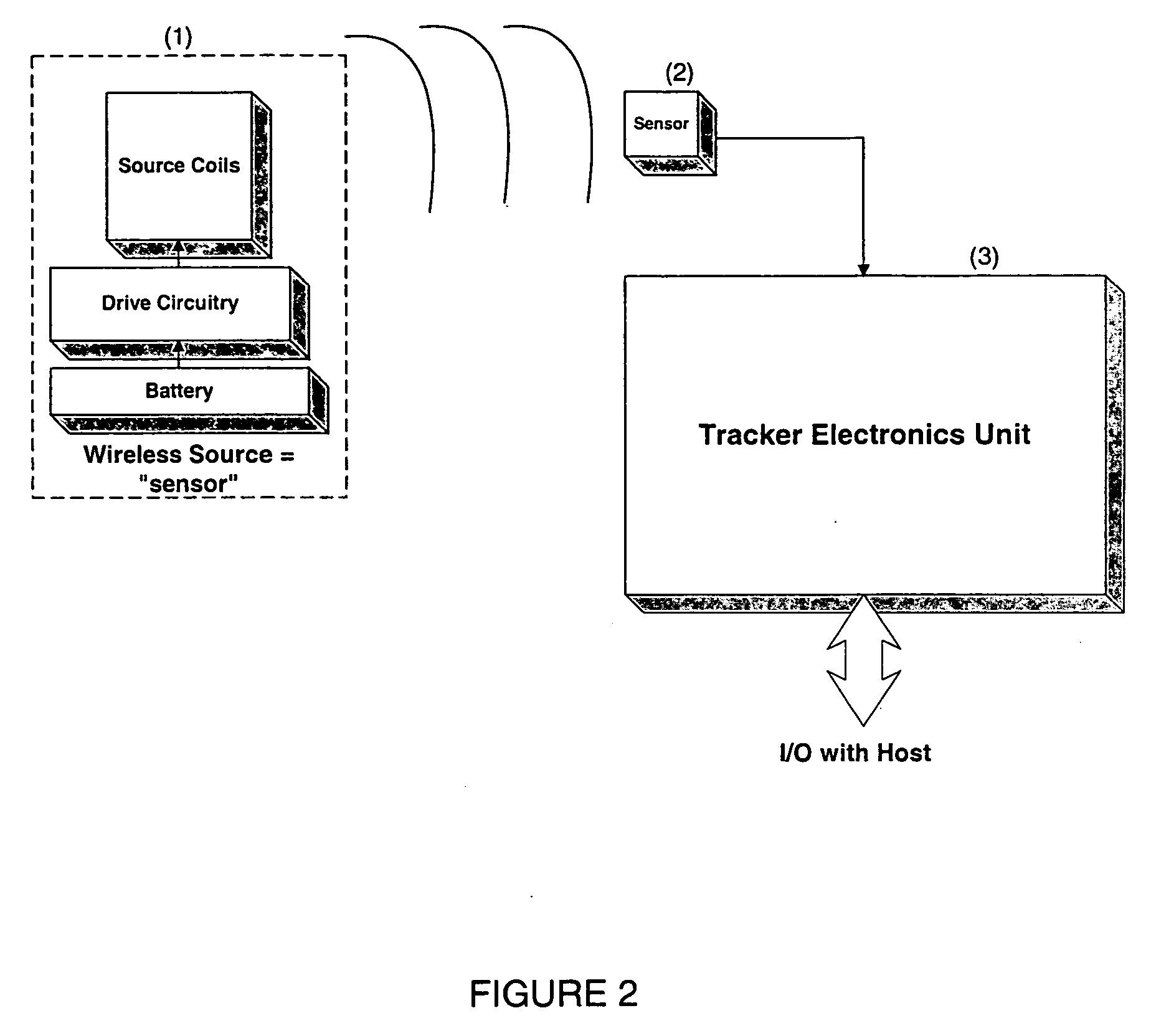AC magnetic tracking system employing wireless field source
a wireless field source and magnetic tracking technology, applied in the field of ac magnetic tracking systems, can solve the problems of difficult to keep running reliably, significant complexity, and restrict the free movement of subjects, and achieve the effects of low signal level, low power consumption, and detectable eddy current distortion
- Summary
- Abstract
- Description
- Claims
- Application Information
AI Technical Summary
Benefits of technology
Problems solved by technology
Method used
Image
Examples
Embodiment Construction
[0021] The expression “frequency set” is used herein to convey the notion that this invention is dependent on creating three independent frequencies, one on each of three coils intended to be arranged geometrically orthogonal to each other, so that the tracker electronics and true sensor intercepting the magnetic field signals can distinguish the proper source axes. For a given system, the frequency sets should be arranged identically from unit-to-unit, and additional frequency sets are chosen so that multiple sources “pseudo-sensors” can navigate in the same environment without repeating frequencies from other pseudo-sensors.
[0022] According to the invention, the tracking of the pseudo-sensor(s) can be accomplished with a single, three-axis set of true sensor coils. The pseudo-sensor source can also be kept quite simple as a self-standing source of the three magnetic fields. As such, the pseudo-sensor source simply creates the signals to be tracked without the need to revert to re...
PUM
 Login to View More
Login to View More Abstract
Description
Claims
Application Information
 Login to View More
Login to View More - R&D
- Intellectual Property
- Life Sciences
- Materials
- Tech Scout
- Unparalleled Data Quality
- Higher Quality Content
- 60% Fewer Hallucinations
Browse by: Latest US Patents, China's latest patents, Technical Efficacy Thesaurus, Application Domain, Technology Topic, Popular Technical Reports.
© 2025 PatSnap. All rights reserved.Legal|Privacy policy|Modern Slavery Act Transparency Statement|Sitemap|About US| Contact US: help@patsnap.com



